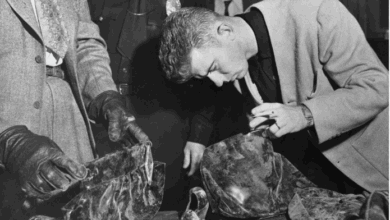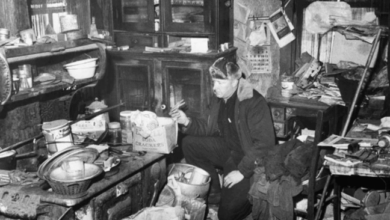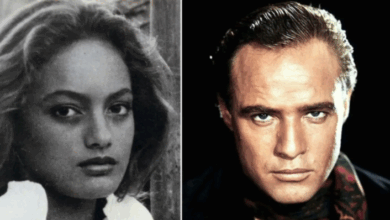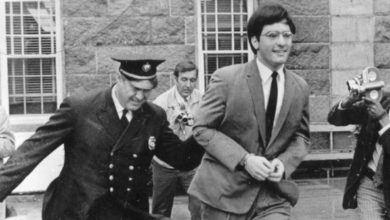Ans Van Dijk, The Jewish Nazi Collaborator Who Was Later Accused Of Betraying Anne Frank And Her Family
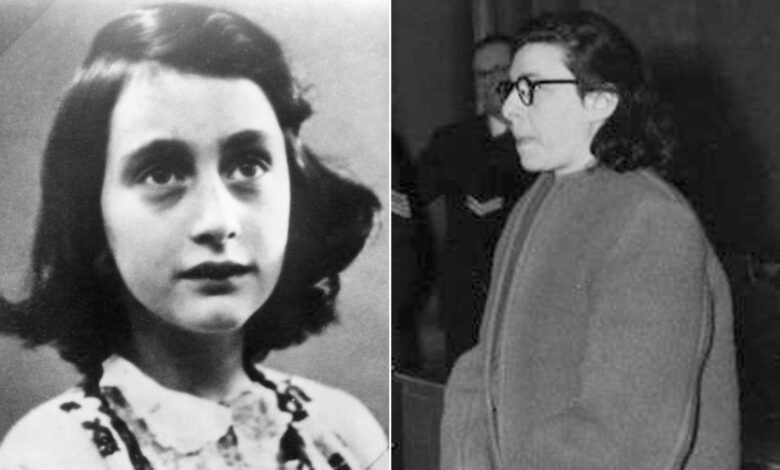
Ans Van Dijk helped the Nazis arrest 145 people during World War II, and some believe that she also revealed the Frank family’s hiding place.
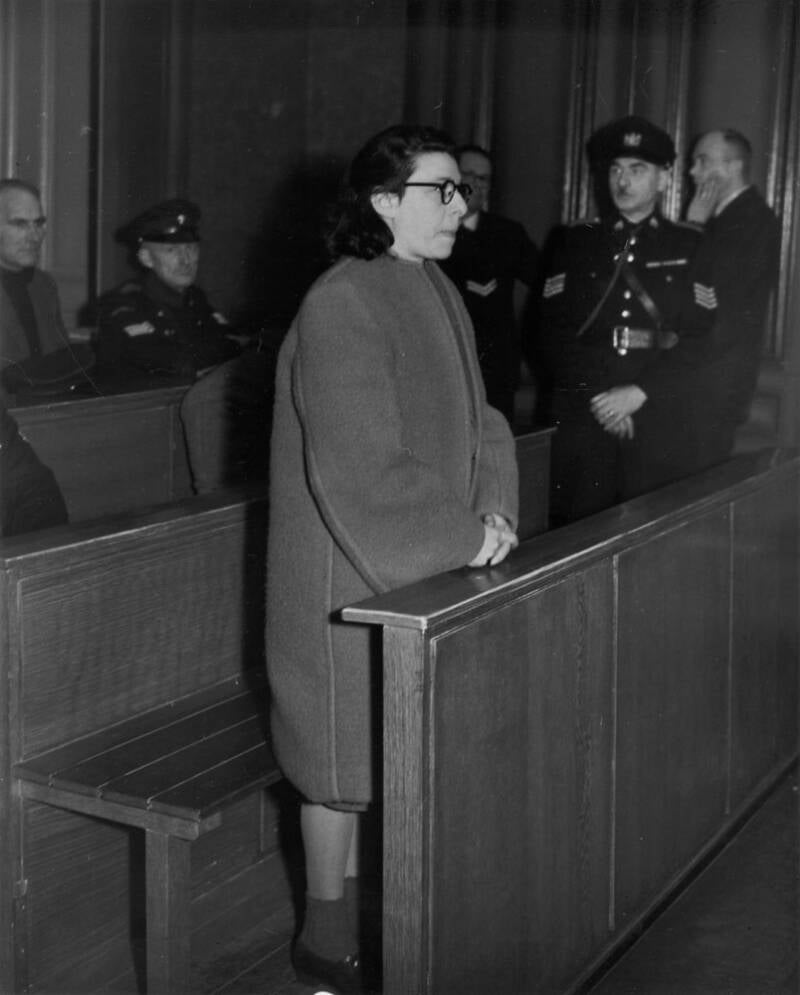
Wikimedia CommonsAns van Dijk at her trial in 1947, where she was handed a death sentence.
Ans van Dijk was one of the Nazis’ most notorious collaborators during World War II. A Dutch Jewish woman, she posed as a member of the resistance and offered to help Jews find hiding places and obtain false papers — only to betray them.
Her actions led to the capture of at least 145 people. Approximately 80 of these people died in concentration camps, though some estimate that the number is much higher — as high as 700 people.
When she was arrested in 1945, van Dijk initially claimed that she had acted out of self-preservation. However, her former superior described van Dijk as eager to do her job, which earned her a death sentence — making van Dijk the only Dutch woman executed for wartime collaboration.
What’s more, several have suggested over the years that Ans Van Dijk led the Nazis to Anne Frank and her family, who spent two years in hiding before their arrest and deportation in August 1944. The Anne Frank House has stated that there is no concrete evidence to support this theory, but it raises the question: Did Ans van Dijk betray Anne Frank?
Ans Van Dijk’s Life Before Collaborating With The Nazis
Ans van Dijk was born on Dec. 24, 1905, to Aron van Dijk and Kaatje Bin, who lived in a ground floor apartment along the Nieuwe Keizersgracht canal in Amsterdam. In 1907, the van Dijks had a second child named Jacob. Kaatje Bin died in 1919, after which her husband remarried and had a third child, Maurice, in 1922.
According to an archived 1994 biography from NRC Boeken, Ans van Dijk married a man by the name of Bram Querido in 1927, though the marriage ended after 13 years — most likely because Ans van Dijk was a lesbian, as her subsequent relationships would suggest. The exact reason for their divorce was never officially announced, but there was some speculation that van Dijk had had an affair with a nurse.
Shortly after, she entered into a relationship with a woman named Miep Stodel, with whom she opened a hat shop called Maison Evany in Amsterdam. But their lives — and the lives of everyone around them — were changed on May 10, 1940, when the Nazis invaded the Netherlands.
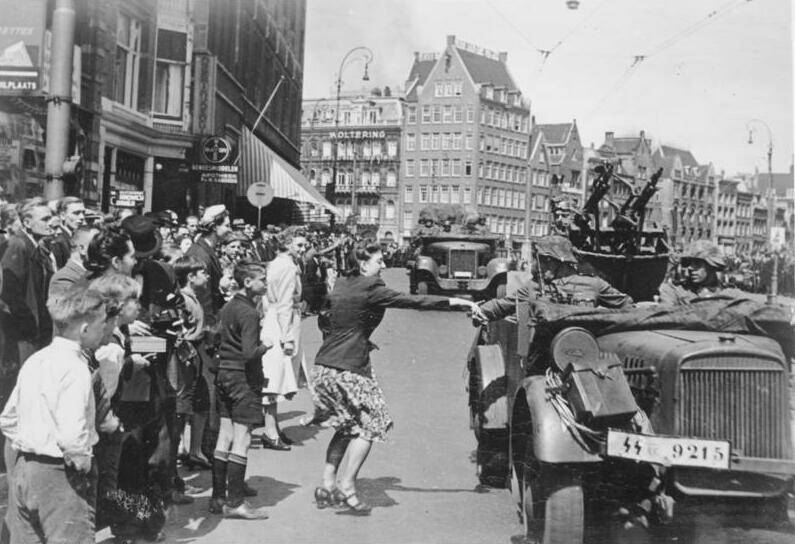
German Federal ArchivesWhen the Germans arrived in Amsterdam, they were greeted warmly by Dutch Nazis.
Ans van Dijk initially refused to register as a Jew or wear a star, and even took measures to hide her heritage by dyeing her hair blonde and using a fake identity. Despite her efforts, though, Maison Evany was registered as a Jewish enterprise and was forced to close in November 1941 alongside all other Jewish businesses.
Stodel fled to Switzerland in 1942, but van Dijk remained in the Netherlands. Initially, she tried to support the resistance, helping fellow Jews hide from the Nazis. But in January 1943, van Dijk had to go into hiding herself — only to be betrayed. Van Dijk was arrested on Easter Sunday 1943 by the Bureau Joodsche Zaken, an agency set up to track down Jews in hiding.
Suddenly, van Dijk had a choice: be deported to a Nazi concentration camp or collaborate with the Nazis. Ans van Dijk chose the latter.
Nazi Collaboration, Betrayal, And Promotion
As it turned out, Ans van Dijk was an effective manipulator. In her first few weeks, she betrayed nine Jews — including her own brother and his family.
Using a false name, she would convince Jews that she was taking them to a secret hiding place. In reality, this was a “trap house” meant to give the Nazis easy access to van Dijk’s victims. Van Dijk’s supervisors flooded her with compliments and even promoted her to lead a group of Jew-hunting women.
“That felt pleasant for a woman who was rarely of never praised in her life,” wrote historian Koos Groen. “It must have given her a sense of power, a feeling that the simple Jewish lesbian had never known before.”
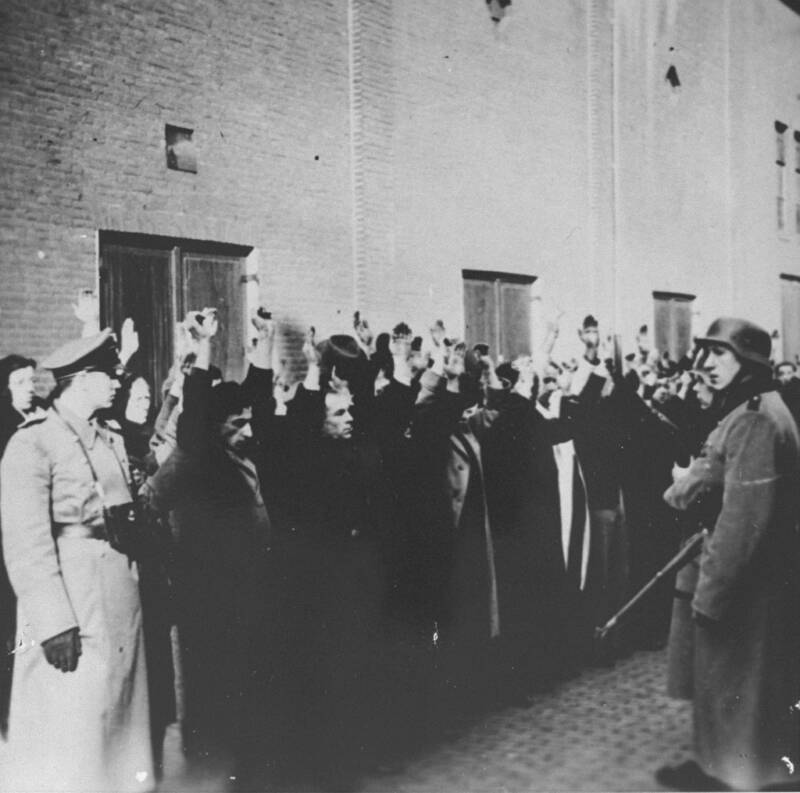
United States Holocaust Memorial MuseumGerman police arresting Jews in the Jewish quarter of Amsterdam. February 1941.
Even as it became clear that Germany would lose the war, Van Dijk continued to work. She was being paid well — and it seems her desire for power and wealth overshadowed her compassion toward the people she betrayed. Groen wrote: “her need for continuity, her will to stay here in the Netherlands was greater than the sympathy with her fellow sufferers.”
It is estimated that between May 1943 and August 1944, Ans van Dijk betrayed 145 people — 107 Jews and 38 non-Jewish Dutch. At least 80 of the betrayed Jews died in concentration camps, as well as four others. But some estimates claim that Ans Van Dijk may have caused the deaths of some 700 people in total.
As the war came to an end, van Dijk left Amsterdam to live with a friend named Mies de Regt in The Hague. Shortly after, she moved to Rotterdam — where she was subsequently arrested on June 20, 1945.
Ans Van Dijk’s Trial And Execution
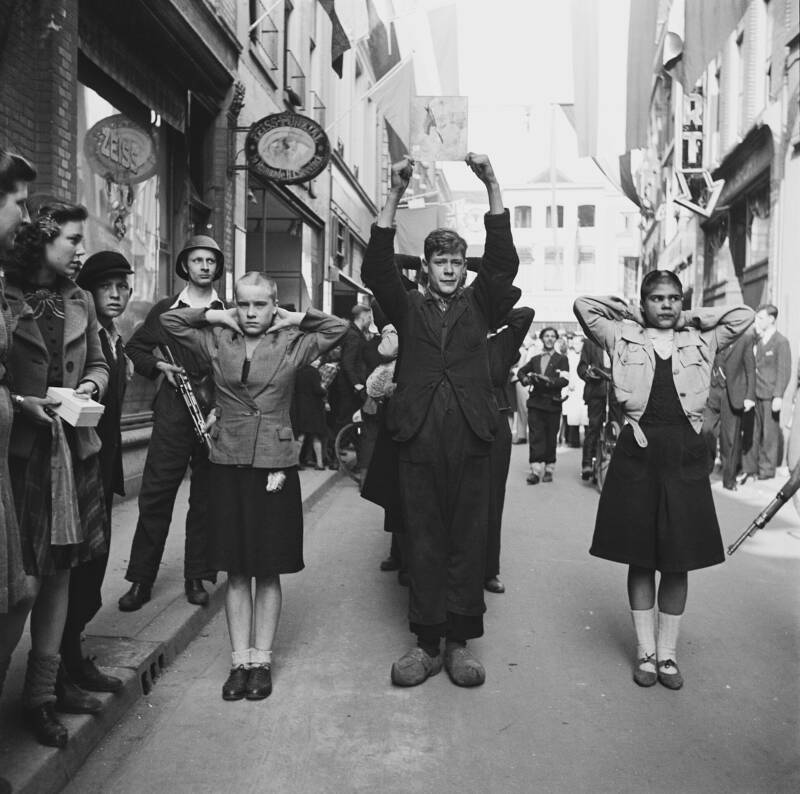
Nationaal ArchiefDutch collaborators, and women who’d had relationships with German soldiers, were rounded up after the Netherlands was liberated in May 1945.
“[She] was the best of the 10 who worked for me at the time,” Ans Van Dijk’s supervisor would say of van Dijk after the war.
Her trial began on Feb. 24, 1947, where she faced 23 counts of treason, to which she pleaded guilty. During her defense, she told the court that her actions were driven by self-preservation and “wild fear,” but the testimony of her Nazi superiors and fellow collaborators painted a different picture.
Indeed, the prosecutor in her case stated that van Dijk had “a satanic hunting instinct,” while an ex-lover called her “a devil in human form.” Though her attorney sent a request to the court for a psychiatric evaluation, this was denied. And Ans van Dijk was sentenced to death.
In September 1947, she appealed the conviction. The Special Court of Appeals, however, confirmed her sentence. In one last desperate attempt to save her own life, van Dijk then requested a royal pardon from Queen Wilhelmina — which was also rejected.
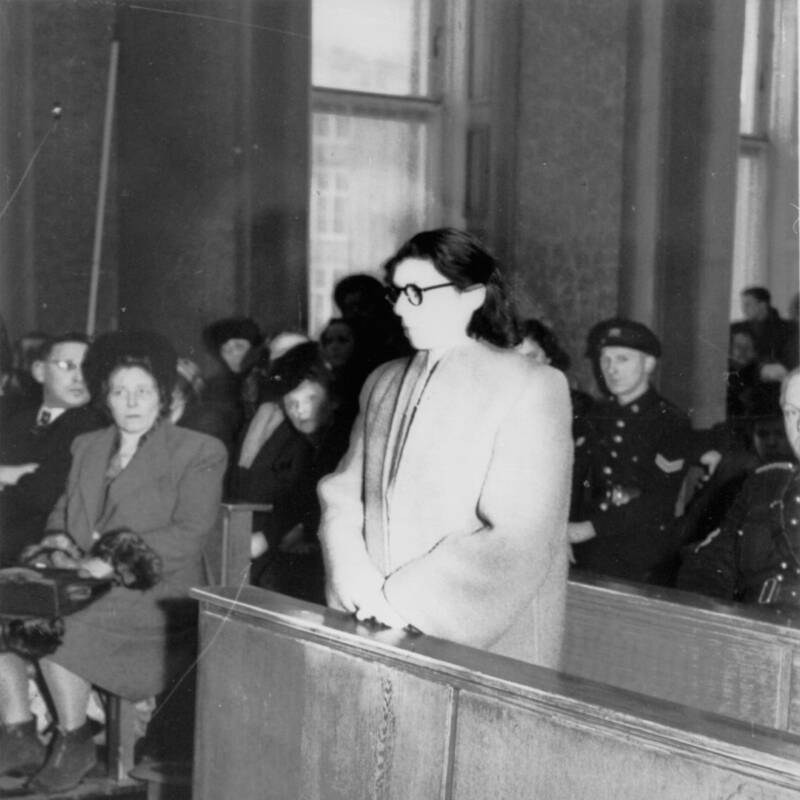
Huygens InstituteAns Van Dijk at her trial.
On Jan. 14, 1948, Ans van Dijk was executed by firing squad at Fort Bijlmer at the age of 42. She was the only Dutch woman executed for wartime collaboration, and Groen theorized that van Dijk was handed a particularly harsh sentence compared to others who committed similar acts of betrayal due to her sexual orientation.
“That was totally unspeakable at the time,” Groen wrote. “That ‘abnormal’ relationship was found dirty and placed her on the margins of society… No matter how crazy it may sound: her behavior gave her security by the certainty that as long as she was useful [she]… had a real chance of survival.”
Ans Van Dijk may collaborated with the Nazis to survive, but did she also lead them to one of the most famous victims of the Holocaust? After World War II, multiple people have suggested that it was Ans Van Dijk who told the Nazis that Anne Frank and her family were hiding at Prinsengracht 263.
Did Ans Van Dijk Betray The Frank Family?
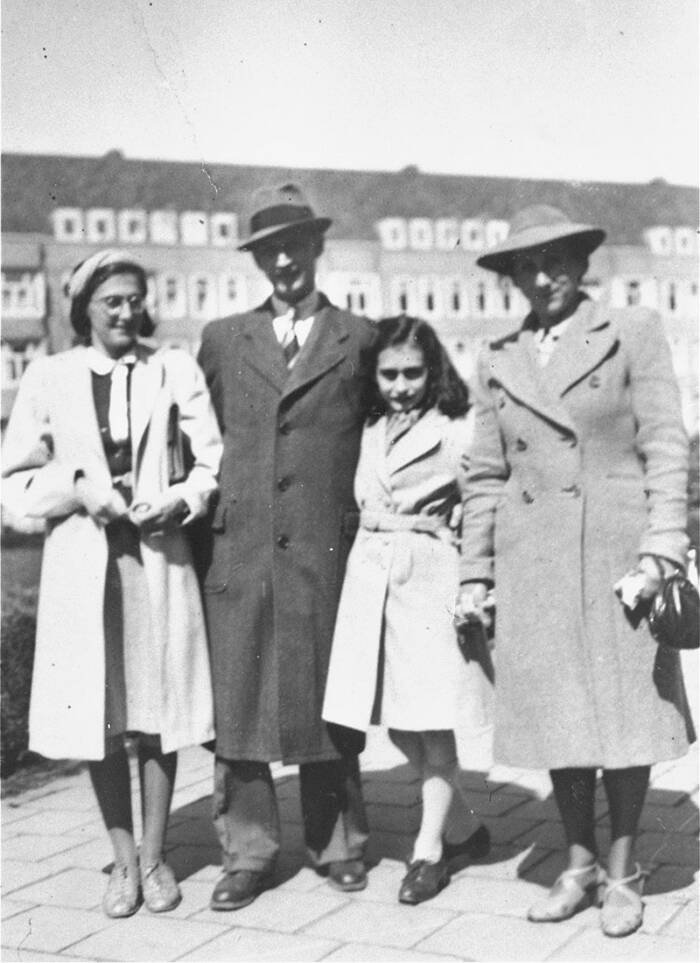
United States Holocaust Memorial MuseumThe Frank family: Margot, Otto, Anne, and Edith.
In 2010, journalist Sytze van der Zee wrote in his book Vogelvrij (Outlawed) that Ans Van Dijk might have known the night guard at the building where the Frank family was hiding. In 2018, Gerard Kremer, the son of a member of the Dutch resistance, repeated these claims in his book, The Backyard of the Secret Annex,.
Kremer wrote that his father was a caretaker of an office building at the back of the Prinsengracht canal on Amsterdam’s Westermarkt, two floors of which were taken over by German authorities and the Dutch Nazi organisation, the NSB. He claims that after Van Dijk’s arrest in 1943, she regularly visited the building to use the telephones. Kremer says that his father overheard van Dijk speaking in the Nazi offices in early August 1944 about a hiding place in Prinsengracht — the implication, of course, being that she was speaking of the Secret Annex, where Anne Frank was hiding with her father Otto, her mother Edith, her sister Margot, and four others.
The inhabitants of the Secret Annex were arrested on August 4, 1944.
Like many families during the Holocaust, the Frank family met a tragic fate. Only Otto survived — Edith Frank died at Auschwitz in January 1945 and Anne died alongside her sister at Bergen-Belsen several weeks later.
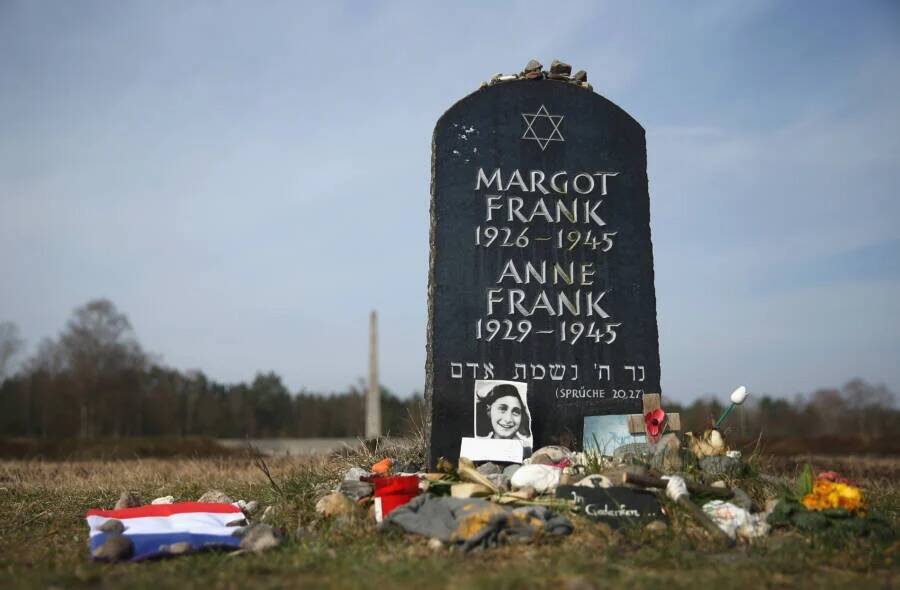
Sean Gallup/Getty ImagesA memorial for Anne and Margot Frank at Bergen-Belsen.
For decades, the mystery of who betrayed the Franks has been a focal point for historians, and claims about Ans Van Dijk have garnered widespread attention. However, there is little concrete evidence to support the claim that van Dijk was the person who betrayed the Frank family.
Kremer’s publisher noted that his book couldn’t claim to prove, beyond a reasonable doubt, that van Dijk was responsible, and the Anne Frank House has echoed the sentiment. Both van der Zee and Kremer’s claims, the organization says, lack strong, first-hand evidence.
“In 2016, the Anne Frank House carried out research into the arrest of the Frank family and the other four people hiding in the secret annex,” a spokesperson noted. “Ans van Dijk was included as a potential traitor in this study. We have not been able to find evidence for this theory, nor for other betrayal theories.”
Ans van Dijk may not have betrayed the Frank family, but she did still betray dozens, potentially hundreds, of others, her own family included. Whether or not she betrayed Anne Frank and her family, van Dijk is certainly stands as one of the most notorious collaborators during World War II.
After reading about the Nazi collaborator Ans van Dijk, learn about Miep Gies, the woman who hid the Frank family for years. Or, see how watchmaker Corrie ten Boom and her family saved 800 Jews during World War II.

